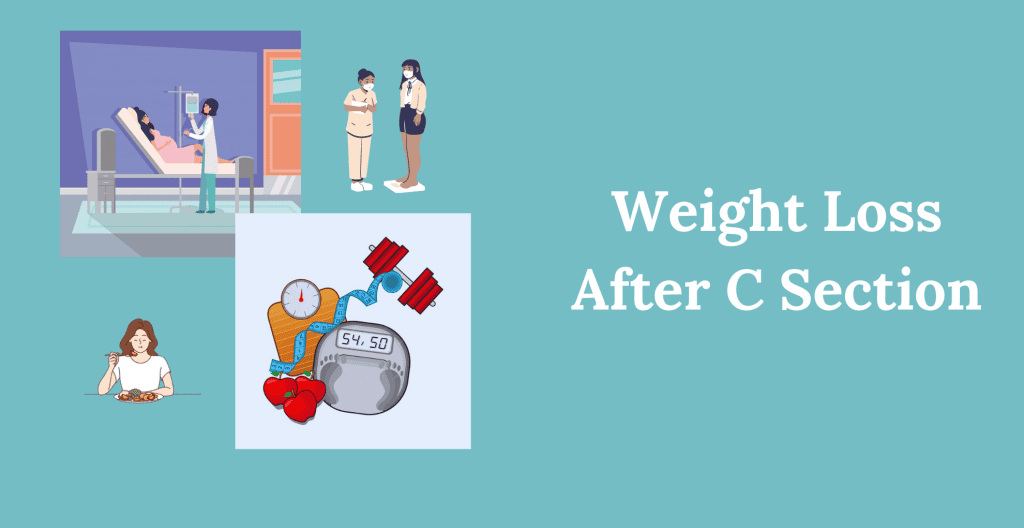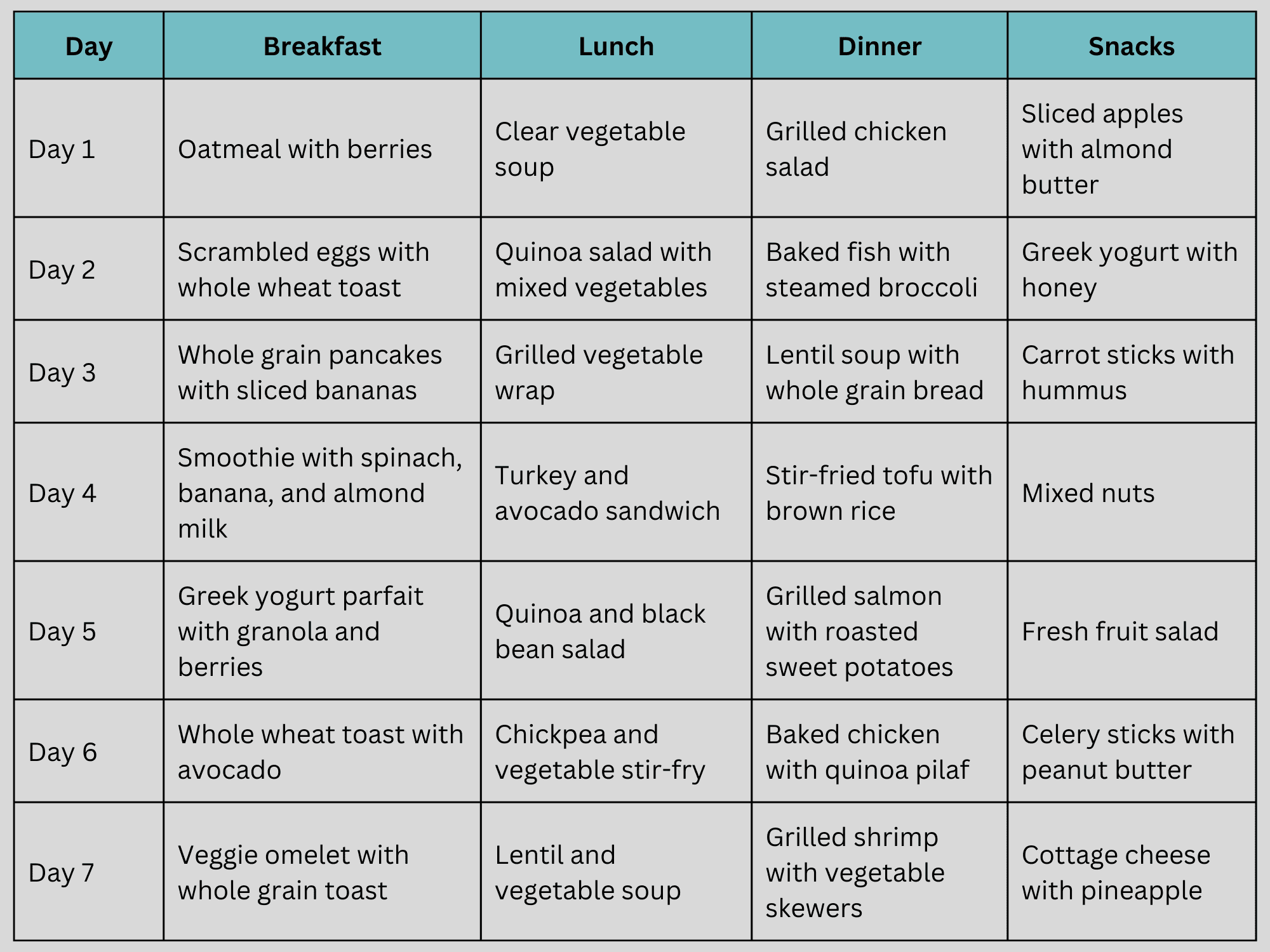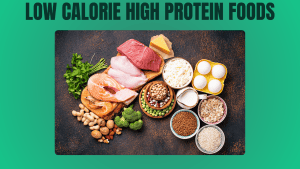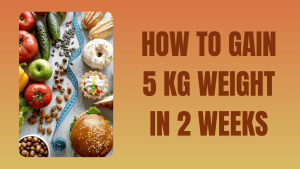Weight loss after childbirth, whether via C section or vaginal delivery, is generally referred to as postpartum weight loss. Factors such as an extended recovery period, hormonal shifts, abdominal muscle separation, discomfort, and potential breastfeeding difficulties can contribute to the perception of weight loss as a daunting task. Following a diet chart for weight loss after C section and losing weight after a Caesarean section (C section) can present unique challenges for new mothers. The procedure itself can lead to a longer recovery period compared to vaginal delivery, which may delay the onset of physical activity and hinder initial weight loss efforts. Additionally, hormonal changes postpartum can affect metabolism, making it harder to shed excess pounds.
To navigate these challenges and kickstart weight loss after a C section, it’s crucial to prioritise patience and gradual progress. One effective strategy is to focus on nutrition by incorporating plenty of fruits, vegetables, lean proteins, and whole grains into meals while limiting processed foods and sugary snacks. Also, gentle exercises like walking or postnatal yoga can help rebuild strength and stamina without putting too much strain on the body. Gradually increasing activity levels as healing progresses is critical to sustainable weight loss and well-being for new moms. In this blog, we shall look over the science behind weight loss after C section delivery, a sample 7 day diet chart for weight loss after C section and tips to follow.
Is it Possible to Lose Weight after C Section?
Yes, losing weight after a Caesarean section (C section) is possible, although it may require a tailored approach and patience. Following a C section, the body undergoes significant changes, and the recovery process can take longer compared to vaginal delivery. Following childbirth, it’s essential to allow your body the necessary time to recover, so practising patience with yourself is critical.
Rapid postpartum weight loss isn’t safe, and it’s realistic to assume that it may take up to a year to reach your pre-pregnancy weight, should that be your goal. Typically, immediately after delivery, as the baby, placenta, and amniotic fluid are expelled, most women experience a reduction in weight ranging from 10 to 13 pounds. This weight loss often continues in the first-week post-delivery as retained fluids are shed. Around the six-week mark after giving birth, the amount of weight lost varies depending on factors such as the type of delivery (C section or vaginal) and lifestyle choices like diet and exercise. It’s generally advisable not to aim for a weight loss of more than one or two pounds per week, as rapid weight loss beyond this rate can be unsustainable and pose health risks.
Consulting with healthcare professionals for personalised advice and guidance, including a post-pregnancy diet chart, can also be beneficial in navigating the unique challenges of weight loss after a C section.
7 Days Diet Plan For Weight Loss After C Section
A Caesarean section, is a major surgical procedure requiring adequate recovery and nutrition. A 7 day diet chart for weight loss after C section focuses on nourishing foods to aid healing and gradual weight loss. It typically includes a balance of lean proteins, whole grains, fruits, vegetables, and healthy fats while prioritising hydration and avoiding processed foods and excessive sugars. Below, we have curated a 7-day approach you may follow for weight loss after c section then there’s and a sample meal plan. It is always a best practice to ask for a meal plan from the doctor you consulted during pregnancy.
Day 1
- Focus on hydration with water and herbal teas.
- Include easily digestible foods like clear soups, broths, and whole grains like oatmeal.
- Incorporate lean proteins like grilled chicken or tofu.
- Snack on fresh fruits and vegetables.
Day 2
- Continue with hydration and easily digestible foods.
- Introduce more variety in vegetables and fruits.
- Include sources of healthy fats like avocados and nuts.
- Choose whole-grain options for carbohydrates like brown rice or quinoa.
Day 3
- Prioritise balanced meals with lean proteins, complex carbohydrates, and healthy fats.
- Incorporate colourful vegetables for a range of nutrients.
- Snack on Greek yoghurt or cottage cheese for added protein.
- Drink plenty of water throughout the day.
Day 4
- Continue with balanced meals focusing on nutrient-rich foods.
- Experiment with different cooking methods like steaming or baking for vegetables and proteins.
- Include fibre-rich foods like beans or lentils.
- Avoid sugary snacks and processed foods.
Day 5
- Emphasise portion control and mindful eating.
- Incorporate plant-based proteins like beans, lentils, or tofu.
- Include a variety of whole grains like quinoa, barley, or whole wheat bread.
- Snack on fresh fruit or raw vegetables for added fibre and vitamins.
Day 6
- Focus on reducing added sugars and refined carbohydrates.
- Include healthy snacks like hummus with veggie sticks or a handful of nuts.
- Incorporate omega-3 fatty acids with fish like salmon or flaxseeds.
- Stay hydrated with water, herbal teas, or infused water with fruits and herbs.
Day 7
- Review the week’s progress and make adjustments if necessary.
- Continue with balanced meals focusing on lean proteins, whole grains, and plenty of fruits and vegetables.
- Include sources of calcium like low-fat dairy or fortified plant-based alternatives.
- Practise mindful eating and listen to your body’s hunger and fullness cues.
Sample diet chart for weight loss after C section–
Foods to Include in C Section Weight Loss Diet Plan
In all the weight loss tips after C section it is suggested on, focusing on nutrient-dense foods that support healing and promote gradual weight loss is essential. You must set sustainable goals, and goals like how to lose 4 kgs in a week must be avoided. You may adopt some strategies that you can employ to foster better synchronisation between breastfeeding and your dietary choices. Here’s a detailed list of foods suggested in the weight loss tips after c section to include:
- Lean Proteins
- Colourful Vegetables
- Fruits
- Whole Grains
- Healthy Fats
- Low-fat Dairy
Let us look at this in detail that can help you accelerate weight loss after C section
1. Lean Proteins
Lean proteins play a vital role in post-C section recovery by providing the building blocks for tissue repair and muscle regeneration. They also support hormone balance, essential for metabolic function and weight management. Including lean proteins in your diet can help you feel full and satisfied, reducing the likelihood of overeating and supporting healthy weight loss.
- Vegetarian Examples: Tofu, tempeh, lentils, chickpeas, and black beans.
- Non-vegetarian Examples: Skinless chicken breast, turkey breast, fish (such as salmon or tilapia), lean cuts of beef or pork.
2. Colourful Vegetables
Colourful vegetables are nutritional powerhouses packed with vitamins, minerals, and antioxidants that support overall health and well-being. After a C section, these nutrients are crucial for boosting immune function and aiding in the repair of damaged tissues. Additionally, the fibre in vegetables promotes digestive health, helps regulate blood sugar levels, and contributes to a feeling of fullness, which can assist in weight management and appetite control.
- Examples: Spinach, kale, bell peppers, carrots, broccoli, tomatoes.
3. Fruits
Fruits are delicious and provide essential vitamins, minerals, and fibre that are beneficial for postpartum recovery and weight loss. Their natural sugars offer a healthier alternative to processed sweets, satisfying cravings while providing hydration and energy. Additionally, the antioxidants in fruits help reduce inflammation and support cellular repair, aiding in the healing process after surgery.
- Examples: Berries (strawberries, blueberries, raspberries), apples, oranges, bananas, and mangoes.
4. Whole Grains
Whole grains are integral to a balanced diet, providing complex carbohydrates, fibre, and essential nutrients that support energy production and satiety. Incorporating whole grains into your meals can help stabilise blood sugar levels, prevent energy crashes, and promote long-lasting feelings of fullness, which is beneficial for managing hunger and cravings during the post-C section recovery. Furthermore, the fibre in whole grains supports digestive health and regularity, reducing the risk of constipation—a common issue after surgery.
- Examples: Quinoa, brown rice, oats, whole wheat bread, barley.
5. Healthy Fats
Healthy fats are essential for numerous physiological processes, including brain function, hormone production, and nutrient absorption. After a C section, incorporating healthy fats into your diet can help support hormonal balance, reduce inflammation, and promote feelings of satiety, aiding in weight loss efforts. Additionally, omega-3 fatty acids found in certain fatty fish and plant-based sources have been shown to have anti-inflammatory properties, which may help alleviate postoperative discomfort and support overall healing.
- Vegetarian Examples: Avocados, nuts (almonds, walnuts, pistachios), seeds (chia seeds, flaxseeds, pumpkin seeds), olive oil.
- Non-vegetarian Examples: Fatty fish (salmon, mackerel, trout), lean cuts of meat (grass-fed beef), and eggs (especially omega-3 enriched eggs).
6. Low-fat Dairy
Low-fat dairy products are rich in calcium and protein, two nutrients that are vital for bone health, muscle repair, and overall wellness. Including low-fat dairy in your diet can help replenish nutrient stores depleted during pregnancy and childbirth, supporting recovery after a C section. Additionally, the protein in dairy products helps promote satiety and muscle growth, which can aid in weight loss and body composition improvements. However, choosing low-fat options to limit saturated fat intake and support heart health is essential.
- Examples: Greek yoghurt, skim milk, low-fat cottage cheese.
Benefits of Following Weight Loss Diet Plan for C Section
Just like using a pregnancy calculator during your pregnancy is important, it is equally important to take proper guidance for the care that you may need after your C section. There can be several benefits to following a weight loss diet plan specifically designed for postpartum C section recovery. Still, it’s essential to consult with your doctor before starting any new plan. Following a diet chart for weight loss after C section not only benefits the mother but also sets a positive example for the entire family. Here are some of the potential benefits:
- Enhances Physical Functioning
- Improves Mood and Mental Health
- Reduces Risk of Complications
- Fosters Long-Term Healthy Habits
- Increases Confidence and Self-Esteem
Let us discuss these benefits of following a diet chart for weight loss after C section in detail-
1. Enhances Physical Functioning
A balanced diet supporting weight loss and muscle recovery can improve physical functioning and mobility after a C section. Strengthening the body through proper nutrition helps new mothers regain strength, stamina, and flexibility, facilitating a smoother transition to daily activities and exercise. Moreover, adequate nutrition fuels the body, providing the energy needed to navigate the demands of caring for a newborn while recovering from surgery. By prioritising nutrition, new mothers can expedite the healing process and experience a smoother transition to resuming regular exercise and daily routines.
2. Improves Mood and Mental Health
Nutrient-dense foods nourish the body and play a vital role in maintaining mental well-being. Following a balanced diet plan can help stabilise blood sugar levels, mitigate mood swings and promote emotional stability. Additionally, certain nutrients found in whole foods, such as omega-3 fatty acids and B vitamins, have been linked to improved mood and reduced symptoms of postpartum depression and anxiety. New mothers can cultivate emotional resilience and overall well-being during the challenging postpartum period by nourishing the body and mind with wholesome foods.
3. Reduces Risk of Complications
Complicated and unrealistic goals like how to lose 15 kgs in a month are something that all mothers should avoid. Adopting a healthy eating pattern can help reduce the risk of post-C section complications such as infection, constipation, and delayed wound healing. Consuming foods rich in fibre, vitamins, and minerals supports gastrointestinal health, immune function, and overall recovery, lowering the likelihood of complications. Adequate fibre intake from these foods also helps prevent constipation, a common post-surgery complication. By prioritising nutrition, mothers can bolster their body’s defences, minimise the likelihood of infections, and facilitate timely wound healing, thus promoting a smoother recovery process.
4. Fosters Long-Term Healthy Habits
Embracing a balanced diet during the postpartum period sets the stage for long-term wellness and healthy habits. By learning to make nutritious food choices and practising portion control early on, new mothers lay the foundation for sustainable lifestyle changes that extend beyond the immediate postpartum phase. These habits support weight management and overall health and serve as a positive example for the entire family. By prioritising nutrition, new mothers empower themselves to lead healthier, happier lives in the years to come.
5. Increases Confidence and Self-Esteem
Achieving weight loss goals and feeling healthier and more energetic can profoundly impact self-confidence and self-esteem. For many new mothers, regaining control over their bodies and witnessing tangible progress in their weight loss journey can instil empowerment and pride. New mothers cultivate a positive body image and a greater sense of self-worth by nourishing their bodies with nutrient-dense foods and prioritising self-care. This newfound confidence benefits their well-being and positively influences their relationships and interactions with others.
How to Follow a C Section Weight Loss Diet Plan?
After undergoing a C section, it’s essential to prioritise your recovery and overall well-being, which may include managing your weight. However, it’s crucial to approach post-C section weight loss cautiously, as your body requires time to heal. Before you explore and buy weight loss plans, consult your healthcare provider for clearance. Once approved, you can start a C section weight loss diet. This plan should emphasise wholesome foods to support recovery and meet nutritional needs, especially if breastfeeding. Remember that gradual, sustainable weight loss is healthier in the long run. Let’s now look at the outline of the steps on how to follow a diet chart for weight loss after C section:
Step 1- Focus on Meals and Timings
Start your day with a balanced breakfast with lean protein, whole grains, and fruits or vegetables. Examples include scrambled eggs with spinach and whole wheat toast or Greek yoghurt topped with berries and granola. These options provide sustained energy and essential nutrients to kickstart your day. Aim for a balanced plate of lean protein sources such as chicken, fish, or beans, paired with whole grains like brown rice or quinoa and plenty of colourful vegetables for lunch and dinner. Incorporating healthy fats like avocado or olive oil adds flavour and promotes satiety, helping you feel satisfied after meals.
Step 2- Frequent, Smaller Meals
Aim for three regular meals and two to three healthy snacks throughout the day while on a diet chart for weight loss after C section. Eating smaller, more frequent meals keeps your metabolism active and prevents blood sugar fluctuations that can trigger cravings. To fuel your body between meals, opt for nutrient-rich snacks such as nuts, fruit slices, or vegetable sticks with hummus.
Step 3- Hydrate Yourself
Stay hydrated by drinking plenty of water throughout the day. Aim for 8-10 glasses to support postpartum recovery, aid digestion, and maintain optimal hydration levels, especially if you’re breastfeeding. Hydration is essential for overall health and well-being.
Step 4- Focus on Fibre Power
Add fibre-rich foods like fruits, vegetables, and whole grains to your meals and snacks. Fibre aids in digestion, promotes feelings of fullness, and supports gut health. Including fibre-rich foods in your diet helps regulate bowel movements and prevents constipation—a common issue post-C section.
Step 5- Read Food Labels
This is an important aspect suggested in weight loss tips after c section while eating packed foods. Pay close attention to calorie content and serving sizes when reading food labels. Being mindful of portion sizes and calorie intake helps you stay within your target calorie range and make informed choices about the foods you consume. Reading food labels empowers you to prioritise nutrient-dense options and avoid foods that may impede your weight loss progress. Minimise your intake of processed foods, sugary drinks, and unhealthy fats. These items provide minimal nutrition and can hinder your weight loss efforts. Opt for whole, minimally processed foods whenever possible to maximise nutrient intake and support overall health.
Expert Review on Weight Loss After C Section
Losing weight after a Caesarean section (C section) presents unique challenges and considerations for new mothers. While the desire to shed post-pregnancy pounds is common, it’s crucial to approach weight loss after a C section with patience, caution, and a focus on overall well-being. Unlike vaginal delivery, a C section involves major abdominal surgery, which necessitates a more extended recovery period and may impact physical activity levels in the immediate postpartum period. Additionally, hormonal changes, breastfeeding, and sleep deprivation further complicate weight loss efforts. Experts typically recommend waiting until at least six weeks for weight loss after C section, allowing the body adequate time to heal. Here are a few noteworthy points to remember:
- Focus on healing first, then gradual weight loss. Doctors and weight loss tips after c section recommend waiting six weeks after delivery before starting any weight loss plans. Aim for a safe and sustainable approach, losing no more than 1 pound weekly.
- Prioritise a balanced diet. Eat plenty of lean protein for healing, fruits and vegetables for essential vitamins and minerals, and whole grains for sustained energy. Limit processed foods, sugary drinks, and unhealthy fats.
- Consult a registered dietitian for personalised guidance. They can create a meal plan that considers your needs, preferences, and give weight loss tips after C section. Ask the dietitian or the doctor about foods to include, and discuss goals that you have on your mind, such as ‘How to lose 1 kg a day after six weeks and is it safe?
References
- n.d. Cesarean Section Delivery Does Not Impact Postpartum Weight Loss and Recovery. Accessed April 5, 2024. https://digitalcommons.wku.edu/cgi/viewcontent.cgi?article=5486&context=ijesab
- Dirmann, Jerry. 2021. “,.”, – YouTube. https://www.cambridge.org/core/journals/nutrition-research-reviews/article/weight-loss-after-pregnancy-challenges-and-opportunities/0FD5F5CA796A9F3EC9939D76995A703A
- Dirmann, Jerry. 2021. “,.”, – YouTube. https://www.science.org/doi/10.1126/sciadv.aao1874
FAQs
Is it possible to lose weight after C section?
Yes, it is possible to lose weight after a C section. While the recovery process may differ for each person, you can achieve weight loss goals with proper nutrition, regular exercise, and patience. It’s essential to consult with your healthcare provider before starting any diet chart for weight loss after C section, to ensure it’s safe for you and your baby.
How can I reduce my tummy after C section naturally?
Healthy eating habits and targeted exercises can reduce your tummy after a C section. Focus on consuming a balanced diet rich in fruits, vegetables, lean proteins, and whole grains while avoiding processed foods and sugary snacks. Incorporate core-strengthening exercises like pelvic tilts, abdominal compressions, and gentle yoga or Pilates routines specifically designed for postpartum recovery. Gradually increase the intensity and duration of your workouts as your body heals and strength returns.
Does having a C section affect your weight?
Having a C section can affect your weight due to factors such as hormonal changes, decreased physical activity during recovery, and changes in dietary habits. However, the impact on weight varies from person to person. Some individuals may experience temporary weight gain or difficulty losing weight post-C section, while others may not notice significant changes. Proper diet, exercise, and support make it possible to manage weight effectively after a C section.
How much weight do you lose immediately after giving birth?
Immediately after giving birth, you can expect to lose weight due to factors such as the expulsion of the baby, placenta, and amniotic fluid. New mothers typically lose around 10 to 12 pounds (4.5 to 5.4 kilograms) during labour and delivery. However, this initial weight loss varies depending on factors such as the size of the baby, amount of amniotic fluid, and maternal weight gain during pregnancy.
Can belly fat reduce after C section?
Yes, with time, proper nutrition, and regular exercise, belly fat can be reduced after a C section. Engaging in exercises that target the abdominal muscles, such as crunches, planks, and leg raises, can help strengthen and tone the core area, reducing belly fat over time. Additionally, maintaining a healthy lifestyle with a balanced diet and staying hydrated can further support the reduction of belly fat post-C section.
How long after C section do you start losing weight?
The timeline for losing weight after a C section varies for each individual and depends on factors such as overall health, diet, activity level, and hormonal changes. While some women may notice weight loss beginning shortly after delivery due to factors like fluid loss and breastfeeding, others may take longer to see significant changes. Focusing on gradual, sustainable weight loss and prioritising your physical and mental well-being postpartum is essential. Consult with your healthcare provider for personalised advice on when to start and how to safely approach weight loss after a C section. You can ask for a diet chart for weight loss after C section and observe changes.










